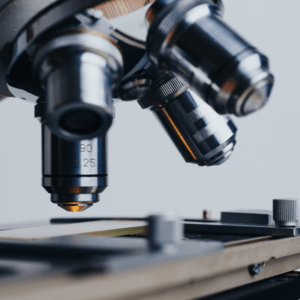 New data indicates that tumors have their own microbiota. Its composition would depend on the type of cancer. Bacteria would be found inside cancer cells as well as adjacent immune cells. These are the astonishing findings recently published in the scientific journal Science.
New data indicates that tumors have their own microbiota. Its composition would depend on the type of cancer. Bacteria would be found inside cancer cells as well as adjacent immune cells. These are the astonishing findings recently published in the scientific journal Science.
Over 1,500 tumors analyzed containing not less than 9,000 bacterial species
The discovery of bacteria in human tumors is not new. In fact, they were first detected over 100 years ago. However, their characterization was complicated due to the low biomass observed.
In this study, their analysis proved possible. In the study,1,526 tumors across 7 different cancer types are screened including breast, ovary, lung, pancreas, melanoma, bone, and brain tumors. 9,160 different bacterial species are identified in tumors in studying genetic material (DNA, RA) and proteins. The contamination possibilities have been eliminated thanks to the implementation of control measures.
A microbiota depending on the tumor type
The bacterial genetic material of cancer cells depends on the type of cancer.
Thus 14% of melanomas contain bacterial DNA against 60% in breast cancers. Bacterial DNA has also been observed in tissues that do not come into contact with the environment, such as the brain, ovaries and bones.
Breast cancer stands out: the tumors have a richer and more diverse microbiota than the others. On average, 16 different bacterial species are detected in a single sample compared to less than 9 in other types of cancer.
Moreover, the researchers find that the bacterial amount and richness were higher in breast samples with tumors than in breast samples from healthy women.
Some living bacteria
DNA samples do not indicate whether bacteria are alive or not. In order to know their potential viability, the researchers analyzed
- cells from tumors;
- adjacent healthy tissue from women recently operated on for breast cancer.
The samples collected were plated in 35 types of growth media, and incubated in both aerobic and anaerobic conditions in order to accommodate a high diversity of bacteria. Then, they were analyzed by electron microscopy after staining.
Results: bacteria are alive, observed by the appearance of colonies. They are generally intracellular whether in cancer cells or immune cells attached to the tumor.
These results lead us to the following question: how did these bacteria get inside tumor cells? According to the researchers, they may have been transported intact or fragmented by immune or cancer cells that had migrated to the tumor site. The disorganized and leaky vasculature of tumors may allow circulating bacteria to enter, and the immunosuppressed environment may provide a refuge for them. They could also be derived from adjacent normal tissues, explaining the similarities between healthy and tumor microbiota.
At this stage, the role of these bacteria is not yet established. Do they play a role in the development of cancer? Or do they reflect infection of already established tumors? Additional research should be considered to address this issue.
From these data, it is not impossible to imagine that the manipulation of these bacteria could influence the response to treatments. Indeed, the richness in certain bacteria in melanoma had an influence on the response to treatment in this study. In addition, other evidence has shown that a change in the gut microbiota influences the effectiveness of immunotherapies. Great prospects for future scientific research!
LC




